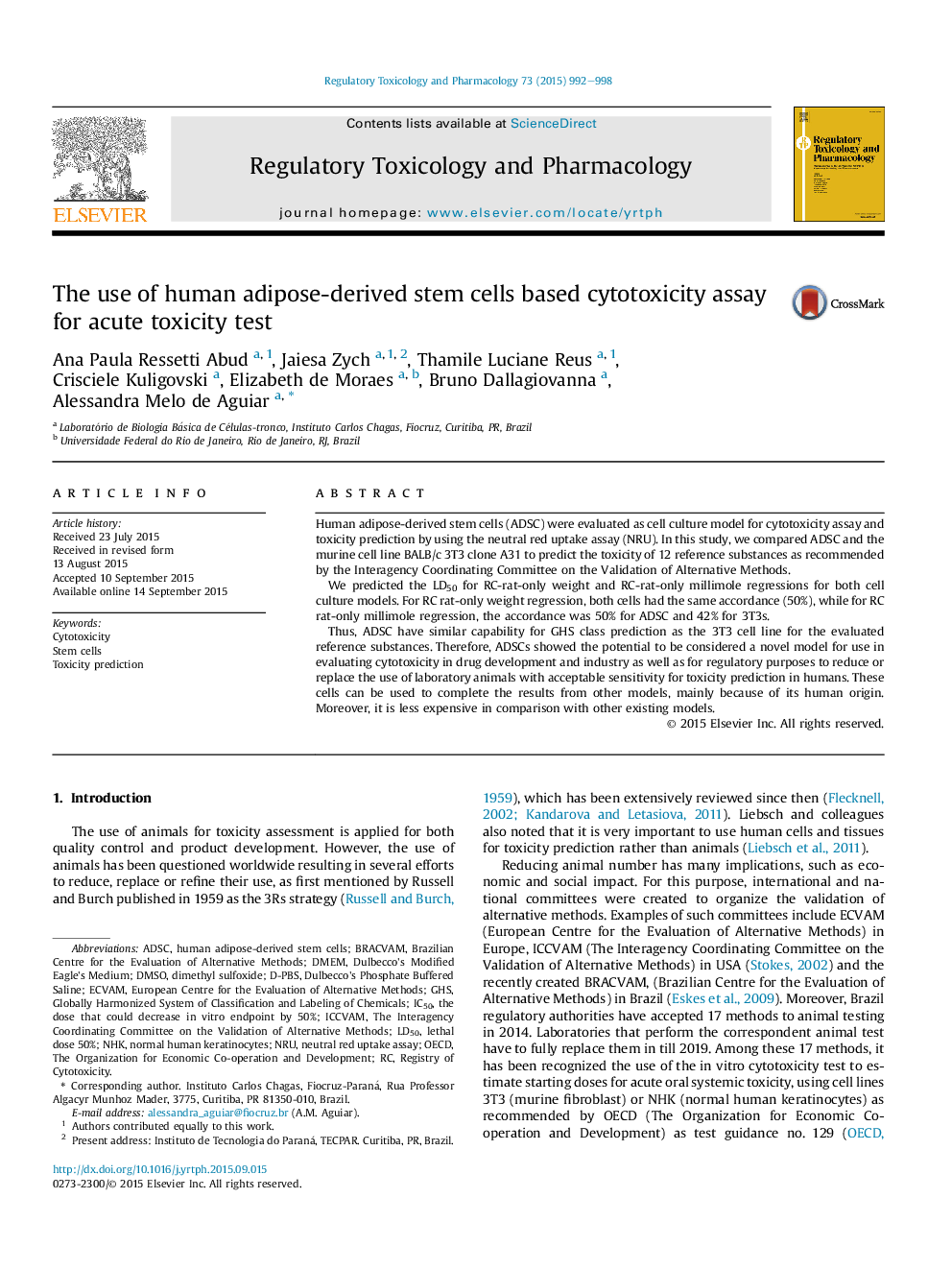| Article ID | Journal | Published Year | Pages | File Type |
|---|---|---|---|---|
| 5856271 | Regulatory Toxicology and Pharmacology | 2015 | 7 Pages |
â¢ADSCs were used in vitro to test the toxicity prediction of 12 reference substances by using the NRU.â¢ADSC show comparable results for the 3T3 cell line, but with the advantage of being of human origin.â¢ADSC can be considered as a potential new cell substrate for predicting starting doses for acute toxicity essays.
Human adipose-derived stem cells (ADSC) were evaluated as cell culture model for cytotoxicity assay and toxicity prediction by using the neutral red uptake assay (NRU). In this study, we compared ADSC and the murine cell line BALB/c 3T3 clone A31 to predict the toxicity of 12 reference substances as recommended by the Interagency Coordinating Committee on the Validation of Alternative Methods.We predicted the LD50 for RC-rat-only weight and RC-rat-only millimole regressions for both cell culture models. For RC rat-only weight regression, both cells had the same accordance (50%), while for RC rat-only millimole regression, the accordance was 50% for ADSC and 42% for 3T3s.Thus, ADSC have similar capability for GHS class prediction as the 3T3 cell line for the evaluated reference substances. Therefore, ADSCs showed the potential to be considered a novel model for use in evaluating cytotoxicity in drug development and industry as well as for regulatory purposes to reduce or replace the use of laboratory animals with acceptable sensitivity for toxicity prediction in humans. These cells can be used to complete the results from other models, mainly because of its human origin. Moreover, it is less expensive in comparison with other existing models.
